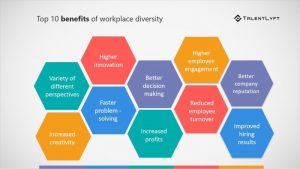— October 22, 2018
Increasingly-powerful and clearly unconventional, Millennials are having a major impact on many areas of life, not least of which is the workplace. By 2025, roughly 75 percent of the workforce will be comprised of these ‘I’ll have it my way, please’ revolutionaries. Small businesses and large organizations alike are being rethought, reimaged and reinvented by this generation’s expectations, habits and preferences. And many of these disruptive changes are benefitting collaboration, culture and company performance.
There are three key ways Millennials are redesigning the workplace:
Spaces to focus, connect, and collaborate. With a healthy appetite for innovation, Millennials are driving a change in office layout that reflects a continuing shift from hierarchy to community. Spurning traditional workplace silos, this generation wants open-plan offices that facilitate collaboration, balanced with spaces for focused work. Rather than simply removing walls, this approach demands a deliberate planning process that considers the natural rhythm of collaboration: employees need time to focus quietly to research and generate ideas, team up to develop a point of view and plan of action, then break off again to tackle specific tasks one-on-one.
Offices should establish areas that are well-suited to informal, spur-of-the-moment conversations between a few people, as well as spots to take calls, host virtual meetings, and engage with people just stopping by. There is also a need for space to focus, so things like breakout rooms for small teams to work together, user-shaped space, and distraction-free spots with comfortable chairs, couches and plants are all important. Thoughtful, well-designed workspaces enhance performance, accelerate innovation, and nurture a collaborative company culture.
The emergence of ‘One Life’. Millennials are all about leading their best life and are happy to blend the private and professional to achieve it. This is the emergence of “one life,” where work and personal lives are integrated, particularly amongst always-on Millennials, who create their own, fluid divisions between work and play, rather than conforming to a rigid ‘8-8-8’ schedule.
Millennials’ working style necessitates devices that combine power and portability. They are looking for tools that replicate the experiences they are having with intuitive and design-friendly devices at home. This includes functionality like voice control or meetings that automatically record and publish notes.
Form and function are equally important to these digital natives. They expect both high performance and premium design from the devices their employers assign them. Their preference for using high-end devices is so ingrained that it is directly affecting recruitment. PWC’s report, Workforce of the Future, found 59 percent of Millennials feel an employer’s provision of state-of-the art technology was highly important when considering which job to take.
For many Millennials, these features are non-negotiables, and any organizations wanting to court this generation must be prepared to meet their demands. As they curate “one life” between their
work and personal spheres, Millennials are driving device selection in the workplace. This also means IT needs to stay on its toes. The adoption of new devices or uses for existing ones consequently drives the need for both stronger yet more flexible security. There must be a symbiotic relationship between IT and young employees to ensure devices can be integrated and useful while also adhering to necessary security protocols.
Freedom to work whenever, wherever. Office, home, coffee shop; Millennials want the independence to work how, when and where they choose. This is not self-indulgent; research shows remote options are good for employees—making them happier, healthier and more engaged—as well as for employers, who, in turn, receive the countless benefits of a more engaged workforce; per the Gallup report, higher engagement leads to 21 percent higher profitability, 20 percent higher sales, 70 percent reduction in safety incidents, and 24 percent lower turnover.
For Millennials, flexible scheduling and work-from-home opportunities are a key factor in decisions to take or leave a job. Gallup’s State of the American Workplace survey found more than 50 percent of employees would switch to a job that provides flexible options, and 37 percent would switch to a job that allows them to work remotely at least part of the time. The study also revealed that engagement soars when employees split their time between remote and on-site work. The optimal engagement happens when employees spend 60 to 80 percent of their time working off-site.
Tools like remote administration, cloud-based project management and video conferencing are making remote work more feasible and increasingly effective. Variable configurations are becoming more common, like hot-desking—a workspace sharing model in which employees outnumber desks and share space, logging into virtual desktops or using their notebooks.
Device security is also a concern when it comes to mitigating the risks associated with remote working. Millennials need to browse confidently and work safely, knowing they have hardened security features that protect their device as well as their private information. Built in security services become crucial in keeping critical processes running, even if malware tries to stop them. Devices that include integrated privacy filters with a press of a button are limiting visual hacking; a major source of information leakage. Other sophisticated measures like endpoint security are protecting laptops and convertibles from the dangers posed by public networks.
Millennials are the driving force behind a not only the reinvented workplace, but the reinvented work life; one where autonomy, flexibility, collaboration—all enabled by technology—are spurring innovation. Employers should work to understand and deliver on Millennials’ preferences if they want to retain their best young talent and bring about positive change within the walls of their company.
Business & Finance Articles on Business 2 Community
(63)






